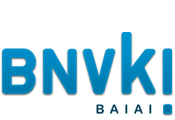4th International Conference on Evolutionary and Biologically Inspired Music, Sound, Art and Design
April 2015, Copenhagen, Denmark
Part of evo* 2015
evo*: http://www.evostar.org
NEW THIS YEAR: LEONARDO Galery
The journal LEONARDO will be publishing a Gallery Section (online and in the
print edition) associated with the conference. This will consist of a number
of visual artworks based on ideas and techniques presented at the conference.
A separate call for this will be issued after papers have been selected for
the conference.
http://www.leonardo.info/gallery/
Following the success of previous events and the importance of the field of evolutionary and biologically inspired (artificial neural network, swarm, alife) music, sound, art and design, evomusart has become an evo* conference with independent proceedings since 2012. Thus, evomusart 2015 is the fourth International Conference on Evolutionary and Biologically Inspired Music, Sound, Art and Design.
The use of biologically inspired techniques for the development of artistic systems is a recent, exciting and significant area of research. There is a growing interest in the application of these techniques in fields such as: visual art and music generation, analysis, and interpretation; sound synthesis; architecture; video; poetry; design; and other creative tasks.
The main goal of evomusart 2015 is to bring together researchers who are using biologically inspired computer techniques for artistic tasks, providing the opportunity to promote, present and discuss ongoing work in the area.The event will be held in April, 2015 in Copenhagen, Denmark, as part of the Evo* event.
Publication Details
Submissions will be rigorously reviewed for scientific and artistic merit. Accepted papers will be presented orally or as posters at the event and included in the evomusart proceedings, published by Springer Verlag in a dedicated volume of the Lecture Notes in Computer Science series. The acceptance rate at evomusart 2014 was 26.7% for papers accepted for oral presentation, or 36.7% for oral and poster presentation combined.
Submitters are strongly encouraged to provide in all papers a link for download of media demonstrating their results, whether music, images, video, or other media types. Links should be anonymised for double-blind review, e.g. using a URL shortening service.
Topics of interest
Submissions should concern the use of biologically inspired computer techniques — e.g. Evolutionary Computation, Artificial Life, Artificial Neural Networks, Swarm Intelligence, other artificial intelligence techniques — in the generation, analysis and interpretation of art, music, design, architecture and other artistic fields. Topics of interest include, but are not limited to:
Generation
- Biologically Inspired Design and Art — Systems that create drawings, images, animations, sculptures, poetry, text, designs, webpages, buildings, etc.;
- Biologically Inspired Sound and Music — Systems that create musical pieces, sounds, instruments, voices, sound effects, sound analysis, etc.;
- Robotic-Based Evolutionary Art and Music;
- Other related artificial intelligence or generative techniques in the fields of Computer Music, Computer Art, etc.;
Theory
- Computational Aesthetics, Experimental Aesthetics; Emotional Response, Surprise, Novelty;
- Representation techniques;
- Surveys of the current state-of-the-art in the area; identification of weaknesses and strengths; comparative analysis and classification;
- Validation methodologies;
- Studies on the applicability of these techniques to related areas;
- New models designed to promote the creative potential of biologically inspired computation;
Computer Aided Creativity and computational creativity
- Systems in which biologically inspired computation is used to promote the creativity of a human user;
- New ways of integrating the user in the evolutionary cycle;
- Analysis and evaluation of: the artistic potential of biologically inspired art and music; the artistic processes inherent to these approaches; the resulting artefacts;
- Collaborative distributed artificial art environments;
Automation
- Techniques for automatic fitness assignment;
- Systems in which an analysis or interpretation of the artworks is used in conjunction with biologically inspired techniques to produce novel objects;
- Systems that resort to biologically inspired computation to perform the analysis of image, music, sound, sculpture, or some other types of artistic object.
Important Dates (to be confirmed)
Submission: 15 November 2014
Notification to authors: 07 January 2015
Camera-ready deadline: 21 January 2015
Evo*: 8-10 April 2015
For more information, see http://www.evostar.org/2015/cfp_evomusart.php
